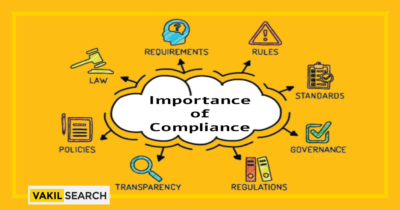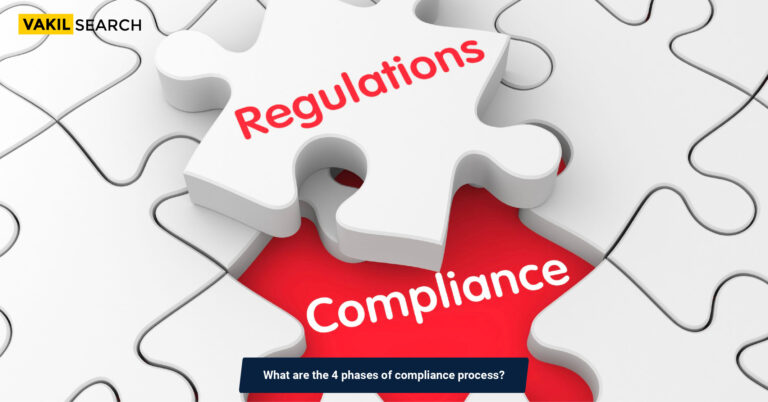Company compliances are to be followed by both Pvt. Ltd. companies as well as publicly listed enterprises. Growing businessmen often get bewildered regarding the complete list of compliances. To provide a solution, we have come up with this exclusive blog.
Introduction
The Public Limited Enterprises in India are needed to prepare the greatest number of annual compliances each year if we study their filings compared to the Private Limited Companies. The listed companies in both the public and private segments which generate the highest degree of periodic and yearly compliances every fiscal year must take care of a handful of provisions. This blog will provide genuine information regarding the Company compliance filings for any listed enterprise in India.
The amended Companies Act (2013) has transformed the annual company compliance to be procured by a limited company rather stringent and comprehensive, while the policies and legislative executions associated with SEBI, RBI, FEMA etc. have now appeared to be more methodical and dynamic.
Therefore the companies that are particularly listed in the index are now more concerned than ever in making annual company compliance in addition to tax-involving compliances. We must clear the fact that these Statutes and legal enforcements exert rigorous policies of hefty penalties, monetary loss and sometimes even worse (imprisonment) if the companies file delayed compliances.
Company Compliance Guideline for Startups
Any startup operating as a Pvt. Ltd. enterprise must abide by a set of compliances as dictated by several statutes and additional regulatory entities. This comprises periodic tax filings along with other returns, board holdings and maintenance of accounts and statutory books as well.
To continue commercial activities in India legally and remain legally compliant, companies must prepare certain documents and abide by prescribed governmental formalities. Non-compliance inevitably brings in penalties and in severe cases, the business can also be ordered to cease operating within the territories of India.
Categorization of company compliances is provided here:
- Registrar compliance
- Non-registrar
In the following section, we are about to explain their specifications in detail.
Particulars of Registrar-Related Company Compliances in India
- E-Form ADT-1 (Appointment of Auditor): Startups must appoint their first auditor within a month. After this, the shareholders are expected to substantiate this enforcement in the first AGM (Annual General Meeting) after which they have to file E-Form ADT-1.
The filing date must not be detected beyond 15 days starting from the date of the first Annual General Meeting.
- Holding AGM: The Company’s first AGM needs to be scheduled within 9 months counting from the closing date of the first fiscal year. After that each year the Annual General Meeting has to be organized within the first half of the fiscal year without fail. The MCA never allows a gap exceeding 15 months between consecutive AGMs
- Holding Board Meeting: The startup’s first Board assembly has to take place within 1 month of incorporation. The next meeting cannot be held prior to the completion of 120 days
List of E-forms That Have to Be Filed
- The official declaration of business commencement (INC-20A): The startup must file this e-form within 180 days following the exact date of the venture’s incorporation.
- Set of financial statements (AOC-4): The particulars include the Directors’ Report and balance sheet in addition to statements related to the P&L account. All the statements need to be filed in not more than 30 days of conducting an AGM
- Appointment or discontinuation of Directors (DIR-12): The specifications of appointment/discontinuation of Company Directors, if applicable, supported by their letter of consent approving their acceptance of appointment/ resignation, need to be filed in less than 30 days of the highlighted event
- Small Company’s Annual Return (MGT-7A): This e-form has to be filed in less than 60 days followed by the Annual General Meeting
- Resolution with the Ministry of Corporate Affairs (MGT-14): The particulars of the institutional resolutions declared in the previous Board meetings have to be filed for successfully pass a Board Resolution. This act must be completed within 1 month of the last Board assembly
- Director’s KYC application (DIR -3 KYC): Each Director must file KYC the DIN allotted before or on 31 March each year. This activity shall not be left unattended after 30 September each year
- Return of Deposits (DPT-3): No startup companies are exempt from filing this return. This needs to be completed by June 30 of each year. This annual company compliance enlists data about outstanding loans or deposits availed by the corporate organization
- Directors’ report: Section 134 of the Companies Act (2013) specifies that the Directors’ Report must be filed stating all the necessary data about the Company. The Chairperson of the Board authenticates this report. One must note that this person should noauthorizedthorised by a minimum of 2 Directors
- Recordkeeping of accounts and Statutory Registers: Statutory registers like ReDirectorsf Director/ members/ agreements and contracts/ loans/ beneficial parties/ particulars of Board assembly/ minutes of other meetings; financial statements; books of accounts; ROC file, all these have to be regularly updated and maintained for future implications
- Distribution of P&L accounts and additional related documents: This distribution must be made among the members of the venture. Authenticated financial statements in addition to Abridged Director’s Report along with the reports generated by the auditor must reach each stakeholder before 3 weeks of the commencement of the AGM.
Similar statutory legal enforcements of such startups compel them to learn about periodic sessions of tax filing in addition to several other returns, accountancy book maintenance abiding by the Income Tax law, and different relevant statutes if applicable.
The business’ category, types of service or product it deals with, net borrowings, turnover volume, net worth, etc. determine the company compliance, and thus it necessarily must not be constant for all startups across India.
Non-registrar Company Compliance for Startups in India
- Disbursement of periodic payouts (GST amounts, TCS, TDS payment, PTax and Advance tax)
- Periodic returns filing comprises:
- Annual/ quarterly/ monthly GST
- TDS Returns (quarterly filing)
- Evaluation of advance tax (as per Section 208)
- Filing of IT Returns
- Profession tax return filing
- PF Returns filing
- Tax Audit Report filing via Forms 3CB and 3CA
- Filing of ESIC Returns (half-yearly)
- Regulatory reporting and assessment of various Acts, for example, the Factory Act, Competition Act, 1986’s Environment Protection Law, etc.
What Are the Forms Required to Be Filed With MCA
| Name of E-forms/ return |
Purpose of E- Form/Return |
Due Date of Filing |
|
DIR-3 KYC/WEB KYC |
Individuals holding a DIN are required to submit the necessary documents for DIR-3 KYC/WEB KYC. | This must be completed within 6 months after the end of the Financial Year. |
| DPT-3 | Yearly report on deposits and exempted deposits. | Within three months following the end of the financial year. |
| BEN-1 | Any individual who becomes a beneficial owner afterward, or experiences a change in their beneficial ownership, must submit a declaration using Form No. BEN-1 to the reporting entity, indicating their significant beneficial ownership or any modifications to it. | All companies are required to update the Registrar in accordance with Section 90 and Rule 4 of the Companies (Significant Beneficial Owners) Rules of 2018. |
| ADT-1 | Appointment of auditor | Fifteen days following the conclusion of the AGM. (Note: For OPCs, it’s 15 days from the date of the board meeting.) |
|
Form AOC-4 and Form AOC-4CFS (in case of consolidated financial statements) |
Filing of annual accounts | Thirty days after the conclusion of the AGM. (Note: For OPCs, it’s within 180 days from the closing of the financial year.) |
| MGT- 7/MGT7-A | Filing of annual returns | Sixty days after the conclusion of the AGM. (Note: For OPCs, it’s within 180 days from the closing of the financial year.) |
Compliance for LLP
Here is a complete outline for LLP’s annual compliances list
| Forms | Purpose of E- Form/Return | Due date | Penalty |
|
DIR-3 KYC (It is filled annually) |
For each individual who has been assigned a DIN. | Within 30 days following the availability of the form. | ₹5000 |
|
Form-11 (It is filled annually) |
Annual Return | Within 60 days following the conclusion of the fiscal year. | ₹100 per day up until the day of filing the form. |
|
Form-8 (It is filled annually) |
Account summary and solvency declaration. | On the 30 of October every fiscal year. | ₹100 per day up until the day of filing the form. |
Compliance for Private Limited Company
Here is a complete outline for Private Limited Company’s annual compliances list
|
Name of E- Form/Return |
Purpose of E- Form/Return | Due Date of Filing |
|
Form DPT-3 (One time) |
For any non-government company with outstanding money/loan receipts, excluding deposits. | The form must be completed annually by June 30 and provide information up to March 31 of that year, duly audited by the company’s auditor. |
|
Form INC- 20A |
Registered with the Registrar of Companies. | Within 180 days from the company’s incorporation. |
| INC-22 | Change in registered office | Within fifteen days from the date of such change |
|
MSME-I (first time) |
For each designated company that obtains goods/services from MSMEs. | Within thirty days from the availability of the form on the MCA portal |
|
MSME-I (half-yearly) |
For each designated company receiving goods or services from MSMEs. | Filed within 45 days from the end of each half-year |
|
Form ADT-1 (Annually) |
Appointment of Auditor | Within 30 days following the company’s incorporation, the initial auditor must be appointed for a five-year term, and the appointment needs to be submitted to the Registrar of Companies (RoC) using Form ADT-1. Subsequently, a new auditor can be appointed within 15 days after the Annual General Meeting (AGM), but only after completing Form ADT-1. |
|
DIR-3 KYC (Annually) |
For every person who has allotted DIN | By April 30 of the following financial year (annual compliance). |
| DIR-9 | Report for Disqualification of the Director | The company must file this within 30 days of the disqualification. |
| DIR-12 | Change in Directors | Within 30 Days of such change |
| ADT-2 | Removal of Director before Expiry | Within 30 days of when such a resolution was passed. |
|
Form MGT- 7(Annually) |
Filing of the annual return of the company | Must be filed within sixty days of the act annual meeting |
| Form AOC – 4 Annually | Filing of the financial statements of the company | Must be filed within thirty days of the last AGM |
Compliance for Public Limited Company
Here is a complete outline for Public Limited Company’s annual compliances list
|
Name of E- Form/Return |
Purpose of E- Form/Return |
Due Date of Filing |
|
Form INC- 20A |
Form in respect of the Commencement of Business | Within 180 days of incorporation |
|
Board Meeting |
Minimum Two Board Meetings | At least one board meeting must be held every six months, with a minimum gap of 90 days between each meeting. |
| MGT-8 | Filing for certification of Annual Return | Every annual return submitted must be certified by a practicing company secretary. |
|
DIR-3 KYC (Annually) |
For every person who has allotted DIN | The annual compliance deadline is on or before April 30 of the following financial year. |
|
Form ADT-1 (Annually) |
Appointment of Auditor |
Within 30 days after the company’s incorporation, the appointment of the first auditor for a five-year term must be filed before the Registrar of Companies (RoC) using Form ADT-1. Subsequently, a new auditor can be appointed within 15 days of the AGM, but only after completing Form ADT-1. |
|
Form MGT- 7(Annually) |
Filing of the annual return of the company | The filing must occur within sixty days following the last annual general meeting (AGM). |
|
Form AOC-4 (Annually) |
Filing of financial statements of the company | The filing deadline is thirty days after the last AGM. |
Compliance for Section 8 Company
Here is a complete outline for Section 8 Company’s annual compliances list
|
Name of E- Form/Return |
Purpose of E- Form/Return | Due dates of filing |
|
Form INC- 20A |
Form pertaining to the initiation of business operations | Within 180 days of incorporation |
|
Board Meeting |
Minimum Two Board Meetings | At least one Board meeting every six months, with a minimum gap of 90 days between each meeting. |
| MBP-1 | Disclosure of interest | At the initial board meeting conducted in each fiscal year or at the first meeting held following changes in disclosures. |
| DIR-8 | Disclosure of interest by the director within the company | During the first Board Meeting of the fiscal year |
|
Form DPT-3 (One time) |
For every company except government companies with outstanding receipts of money/loans other than deposits. | The form should be completed annually by June 30 and information must be provided until March 31 of that year, duly audited by the company’s auditor. |
|
Form ADT-1 (Annually) |
Appointment of Auditor |
Within 30 days following the company’s incorporation, the first auditor must be appointed for a five-year term, and the appointment should be filed with the Registrar of Companies (RoC) using Form ADT-1. A new auditor can be appointed within 15 days of the Annual General Meeting (AGM) only after completing Form ADT-1. |
|
Form MGT- 7(Annually) |
Submission of the company’s annual return | The filing must occur within a period of sixty days from the conclusion of the last Annual General Meeting (AGM). |
|
Form AOC-4 (Annually) |
Submission of the company’s financial statements | The filing must occur within a period of sixty days from the conclusion of the last Annual General Meeting (AGM). |
Conclusion
Budding entrepreneurs are likely to get overwhelmed once they learn about the elaborated list of company compliances in India. Thus, to protect them from paying fines and to assure field-specific guidance, we have prepared a watch list of relevant content that you should check out Vakilsearch.
Frequently Asked Questions
What is the compliance of a company?
Compliance for a company refers to the act of adhering to laws, regulations, and standards set by authorities governing the industry in which the company operates. It encompasses various legal, financial, and operational obligations that a company must meet to ensure it operates within the legal framework.
How much does the annual compliance cost for a Pvt Ltd firm?
The annual compliance cost for a private limited (Pvt Ltd) firm can vary widely depending on factors such as the size of the company, industry regulations, and specific compliance requirements. Costs may include fees for audits, legal consultations, documentation, and any penalties incurred for non-compliance.
What is ROC compliance?
ROC (Registrar of Companies) compliance involves fulfilling the regulatory requirements mandated by the Companies Act of 2013. This includes filing annual financial statements, annual returns, and other documents with the ROC. It ensures transparency and legal standing for the company.
What are the benefits of annual compliance?
Benefits of annual compliance include maintaining legal standing, avoiding penalties, building trust with stakeholders, ensuring financial transparency, and demonstrating corporate responsibility. It also helps in preventing legal issues and safeguarding the company's reputation.
Why is compliance important in a company?
Compliance is crucial for a company as it ensures adherence to laws and regulations, which helps in avoiding legal consequences, financial penalties, and reputational damage. It establishes trust with stakeholders, protects the company's interests, and contributes to a sustainable and responsible business environment.
What is an annual compliance report?
An annual compliance report is a comprehensive document that outlines a company's adherence to various legal and regulatory requirements over the course of a year. It typically includes details on financial performance, governance practices, and compliance with specific laws and regulations.
How do I file annual compliance?
Filing annual compliance involves submitting required documents to regulatory authorities, such as the ROC. This may include financial statements, annual returns, and other necessary reports. The process varies by jurisdiction, and it's often recommended to seek professional advice to ensure accurate and timely filing.
What is the annual compliance review?
An annual compliance review involves assessing and verifying a company's adherence to all applicable laws, regulations, and internal policies. It helps identify any areas of non-compliance, mitigates risks, and ensures that the company continues to operate within the legal framework.
What is an annual compliance certificate?
An annual compliance certificate is a document issued by a company or its authorised representatives, certifying that the company has complied with all relevant laws, regulations, and internal policies throughout the specified period.
Who is responsible for compliance?
Compliance is a shared responsibility within a company. It typically involves collaboration between various departments, including legal, finance, human resources, and operations. The board of directors, executives, and designated compliance officers play crucial roles in overseeing and ensuring compliance within the organisation.











